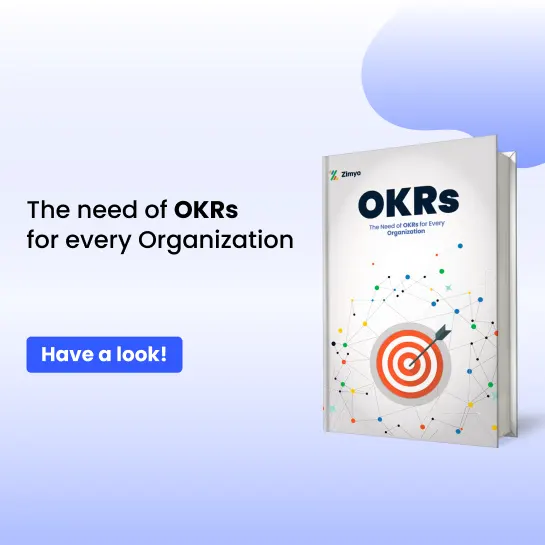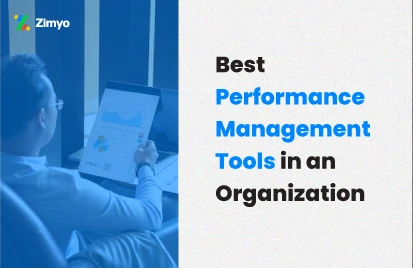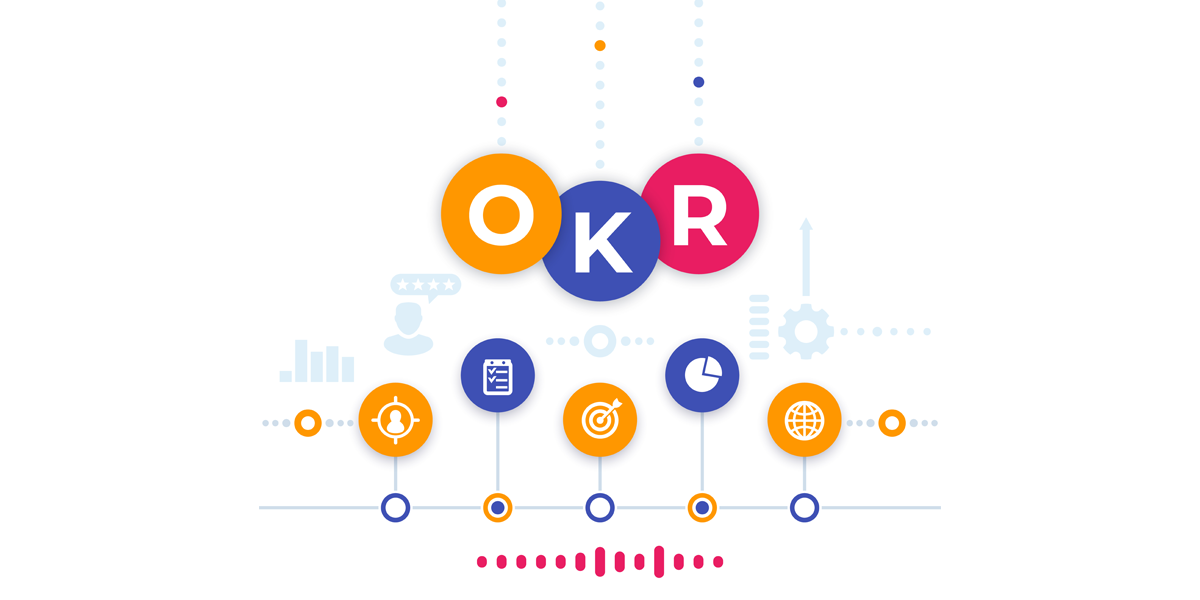Complex processes using tools, human labor, and machinery characterize employee performance management in manufacturing industry, intending to achieve economies of scale. You can use human labor, machinery, and progressively automated technology to create goods from raw materials in these industries.
Manufacturing processes typically fall on a spectrum, with high volume/low complexity procedures on one extreme and low volume/high complexity operations on the other.
In recent years, HR technology has made more presence in employee performance management in the manufacturing industry. Employees play a critical part in business and the ultimate success of the industry, therefore it’s critical to keep them interested in returning to work, which you can achieve by focusing on their performance.
However, there are many challenges that these manufacturing industries face when it comes to performance management. Let’s take a closer look at them!
Key Performance Management Challenges In Manufacturing Industry
Manufacturing executives have not been able to make the shift from yearly to monthly appraisal method for the manufacturing industry, let alone the weekly or daily frequency required for the most performance-sensitive workplaces, despite the industry’s low participation rates in performance assessments across divisions.
As a result, factory executives are missing out on actionable performance data that can be used to improve and drive continuous performance, which can be expensive.
According to research, operational cost competitiveness is cited by 36% of business leaders as a cause of industry disruption. Furthermore, Covid-19 has aggravated the industrial sector’s shop-floor productivity concerns, notably in the high-mix, low-volume region of production.
Global increases in demand for goods caused by pandemics have forced manufacturers into an unprecedented environment of continually pressed delivery deadlines. Manufacturing workflows have been affected by global component shortfalls, social distance regulations, and unscheduled plant closures (due to quarantining procedures). As a result, manufacturing companies are having difficulty delivering crucial items to areas where they are most needed.
An employee performance management software in the manufacturing industry promises to be more efficient as a reaction to these unusual global challenges because it specializes in three areas where existing techniques fail to perform. These are the following:
- Real-time performance visibility
- Daily goal setting and management
- End to end employee accountability
According to research, manufacturing companies that integrate a performance management system into their operating model achieve productivity gains of 30 to 50 percent after 8 to 12 weeks of implementation. At the same time, these businesses experience an increase in on-time delivery and gain access to more capacity.
Benefits Of Performance Management Software In Manufacturing Industry
Manufacturing organizations can use a performance management system to create a more engaged workforce and provide workers with a meaningful feeling of work by delivering constant feedback and goals to employees. This ensures that employees from the front lines to the field know how their efforts impact the strategic mission, giving them a sense of greater purpose and importance in their work.
Consider the following examples of how a performance management system might help the manufacturing industry:
High Performing Workforce
Employee retention is aided by the ability of employees to learn new or improved job skills. It is, in fact, one of the most critical aspects of employee engagement.
You can use performance management software for goal setting and management in the manufacturing industry on a regular basis. It will not only help to store all of the relevant data, but it will also enable the management and employee to track performance against the agreed-upon objectives.
According to Gallup, high-performing manufacturing firms had 70 percent fewer employee safety accidents than low-performing workplaces.
360 Degree Feedback
Employees that use a performance management system with 360-degree feedback can get feedback from coworkers and bosses who aren’t performing the actual review. As a result, many biases in performance evaluations are reduced.
It also increases workplace accountability because coworkers are aware that their peers, and not just their managers, are evaluating their performance.
Managers can also use a 360-degree feedback approach to determine what training they should deliver to their workers. Companies that spend $1500 or more per person per year on training see a 24 percent increase in profit margins compared to companies that spend less.
Department Silos
It can also give shared insights for store workers, allowing them to better understand their contributions to higher-level goals and empowering them to exceed expectations.
Today’s manufacturers are frequently organized in disconnected silos, making it harder to avoid competing activities that could jeopardize the company’s overall aims. Furthermore, handwritten department forms or spreadsheets are difficult to integrate into providing insights into higher-level objectives.
Strategic Goal Setting & Management
At its most basic level, performance management encompasses goal setting and management in the manufacturing industry. It provides targets for manufacturing processes with critical indicators such as uptime, faults per run, cycle times, and others at the most precise level.
Employee Performance management in the manufacturing industry enables you to achieve results by focusing on the implementation of strategies at all levels of the organization. This improves visibility and control, which is usually not the case due to fragmented data and systems.
Performance management assists a corporation in making and implementing choices. It can serve as the backbone that integrates all of the company’s activities into a system for achieving the high-level objectives that management seeks to attain, as well as a single source of truth. The method allows you to develop the company’s high-level goals, then create supporting goals down to specific department KPIs.
Aligning With Business Purpose
The ultimate purpose of Employee performance management in the manufacturing industry is to link the company’s top-level goals with the complicated network of operations that make up the company. Customer satisfaction, product diversity, quality, and several other objectives are examples of top-level objectives. It is critical for business success that all actions in the company point and act towards these objectives.
Achieving Operational Success
Another major goal of employee performance management in the manufacturing industry is to optimize all of the business’s sub-processes. Collecting feedback for each activity might help you to start the gradual process improvements that your company needs to succeed.
It is necessary to identify the key performance indicators for each position or activity and to begin the unit improvement process. Measuring each position or operation can also serve as a motivator for making little changes.
Using Data As A Strategic Asset
Performance management gives you the information you need to outperform the competition. You can only envision a company that coincides with each individual’s beliefs rather than the company’s overall goals. Performance management may bring all of these processes together to generate a strategic advantage by aligning them with the company’s overall goals.
Goal Setting And Management In Manufacturing Industry
Employee performance management in the manufacturing industry may help you gain a thorough awareness of the factors that influence performance across your whole business, including production, supply chain, sales, product lines, customers, and channels. It provides insight into the true factors affecting your bottom line.
Secondly, performance management helps the organization focus on the most critical aspects of success. Only the most crucial areas with the greatest impact on the organization’s results are assigned key performance indicators (KPIs). This makes it easier to see the actions that have a direct impact on achieving important objectives.
What are KPI’s?
Key performance indicators (KPIs) are the targets that you can set to help an organization define and measure progress. KPIs must be quantifiable, and be core-critical success factors of the organization. They should also reflect the organization’s goals
You can implement thousands of measures (KPI’s). As with any complex topic, the key to success is finding the few key measurements that impact the business the most. Some of the best measurements will be obvious, but others may need to be uncovered by those experienced in implementing performance management in your industry.
Example KPI’s in Manufacturing
The goals that are set to assist a company define and assess progress are known as key performance indicators (KPIs). KPIs must be definable and essential to the organization’s performance. They should also represent the objectives of the organization.
There are literally thousands of key performance indicators (KPIs) that may be used. The secret to winning, like with any complex topic, is to identify the few important metrics that have the greatest impact on the business. Some of the most effective metrics will be self-evident, while others may require the assistance of people with experience adopting performance management in your business.
Shop floor KPIs
- Operation Due Dates Met
- Material Usage Variances
- Cost of Scrap & Re-work
- Operator Efficiency %
- Labor Rate Variances
Quality KPIs
- Measurement of Corrective Actions to Customer Issues
- Reduction of Returned Materials
- Lead Time Reduction
- Conformance with Outside/Government Regulations
Maintenance KPIs
- Critical Machine Availability
- Downtime
- Maintenance/Department Budget vs. Actual
- Maintenance Inventory Levels
Characteristics Of Good Performance Software For Manufacturing Industry
Let’s take a look at some of the characteristics of good performance software for manufacturing industry:
Dashboards
Performance management necessitates quick access to information that is simple to absorb, comprehend, and act upon. Focused dashboards with informative images that make the results easy to read and comprehend are required in production tools.
Roles
Because employee performance management in manufacturing industry aims to integrate and maximize the results of sub-processes as a whole, it’s also critical that your solution can structure the business’s roles and processes. A reliable solution will enable measurement by roles such as production scheduler, shop manager, and so on, as well as typical processes like cutting, stamping, and assembly. Each role has access to the specific KPIs and dashboards that relate to their responsibilities in achieving business objectives.
Real-time Reporting
Performance management is based not just on historical data that allows for corrective measures, but also on real-time information that allows for problem detection and rectification right away. When deviations occur, this reporting often takes the form of alerts and exception reporting, which can notify the right people promptly. When quality criteria aren’t reached, this can also help to restrict additional part manufacture.
Fit for the business
For a mid-sized corporation, some performance management tools can be too difficult. High-level statistics and IT-type instructions will only dissuade your front-line employees from using the products. If your employees can’t use the software, it can’t benefit your organization.
Therefore, good employee performance management software should be easy to use.
Integrated with your data
This is, without a doubt, the most crucial issue. Only large companies’ IT departments are ready to develop internal tools that work across several vendor apps. Your mid-sized integrated solution should include pre-built data relationships, allowing you to create databases or reports with only a few clicks.
Easily Accessible
Without any help from your IT department, a good performance management tool will always provide connections to your data. You may easily select the data you wish to use and then generate engaging reports and graphs.
Flexibility
Flexible report and graph generation are possible with the right tools. You should never have to rely on pre-made reports or graphs. The tool should give you the freedom to create any report you want, but it shouldn’t require an IT degree to use. Do you want to add a new field, try a new graph format, or change the time periods? An ideal performance management system should make it a breeze for you!
A Word From Zimyo
A good performance management system can help a company improve its results at all levels. Individual tasks can be linked with corporate strategy to achieve results that outperform the competition.
And, thanks to Zimyo’s competitive features, developing a feedback-friendly environment is now easier than ever. Our performance management software will offer you actionable data to help you accelerate your manufacturing company’s growth and turn your people into growth engines!
Also Read: How HR Software Can Help In Recruitment & Onboarding





